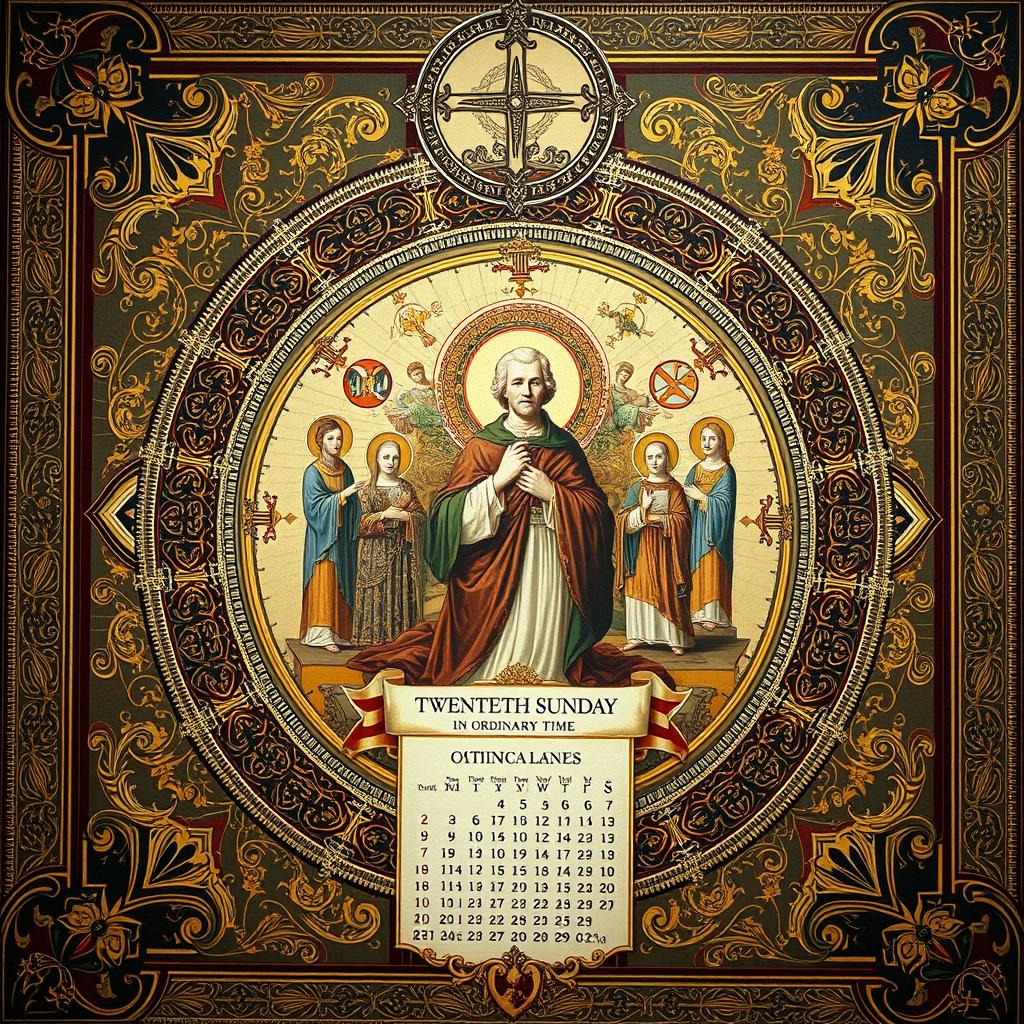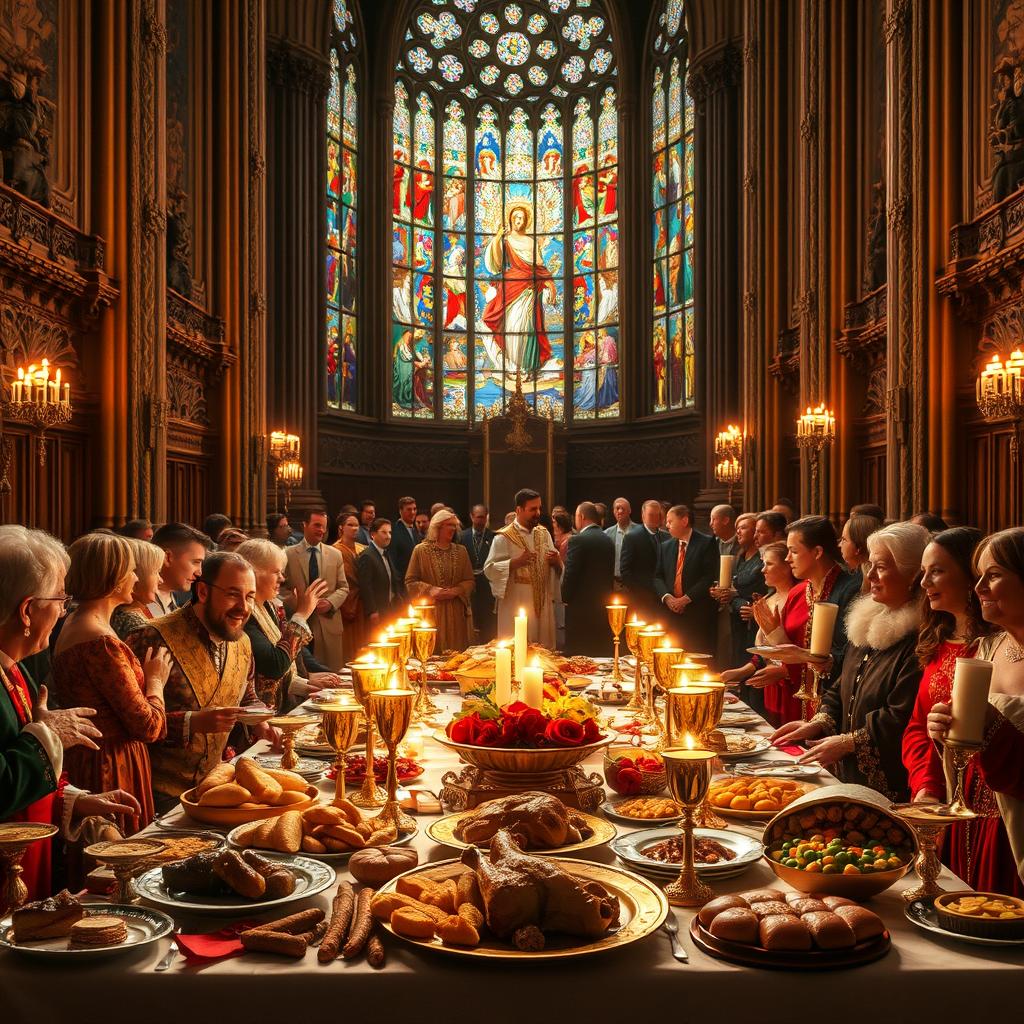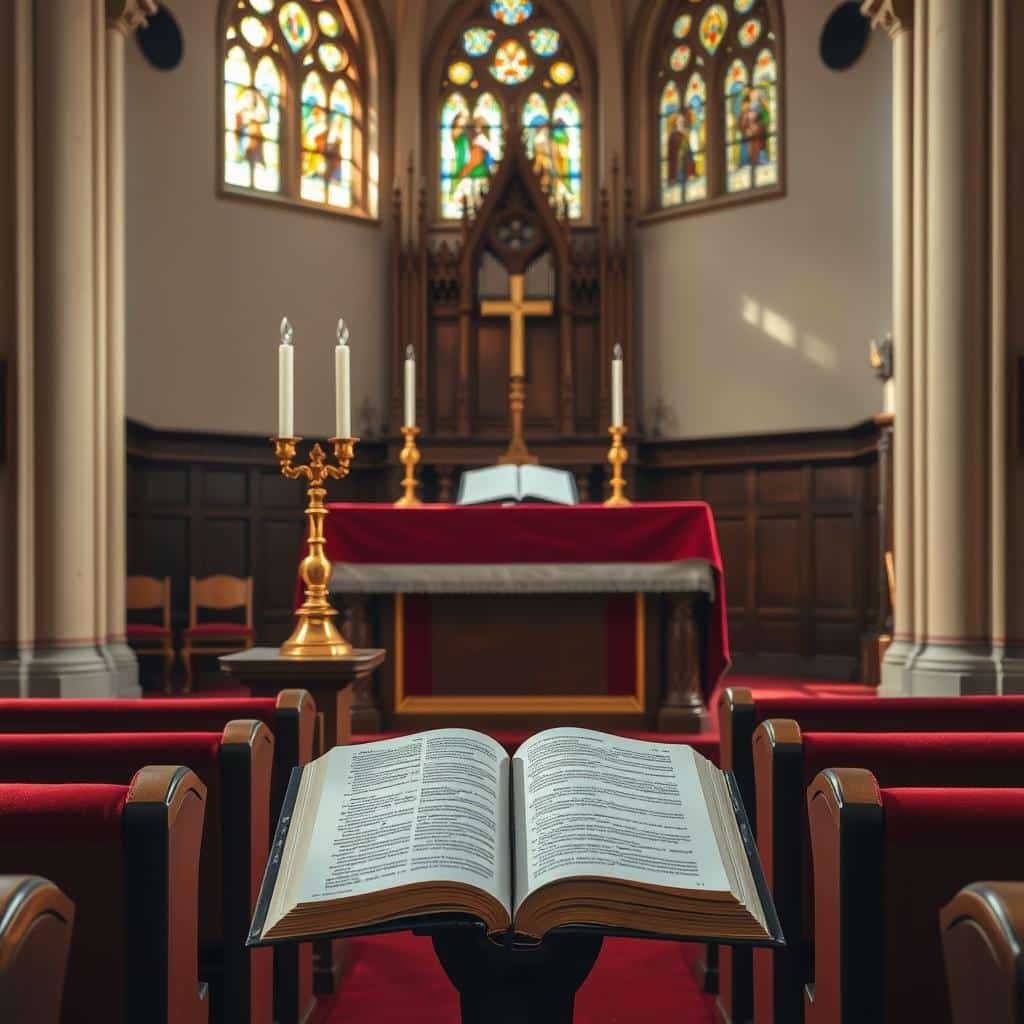The catholic liturgical calendar marks the Twentieth Sunday in Ordinary Time, Cycle C. It’s a day for the faithful to think about prophetic witness and the call of faith.
The readings for this day include Jeremiah 38:4-6,8-10, Psalm 40:2,3,4,18, Hebrews 12:1-4, and Luke 12:49-53. They offer deep spiritual guidance.
Exploring these biblical readings invites us to understand being a prophetic witness. It’s about embracing the challenges and rewards of a life of faith.
The Liturgical Context of Ordinary Time
Ordinary Time is a special time in the Catholic Church’s year. It’s filled with hope and renewal. The color green, symbolizing growth and life, encourages the faithful to learn more about Christ’s teachings.
Understanding the Season’s Purpose
Ordinary Time is not called “ordinary” because it’s unimportant. It’s a time for focusing on the everyday Christian life. It has two parts, one after Christmas and the other after Easter.
Spiritual Growth During Ordinary Time
Ordinary Time helps the faithful grow spiritually. The readings and prayers guide them towards maturity. It’s a time for:
- Reflecting on the Gospel
- Understanding Christ’s message deeper
- Living faith in daily life
Green as the Color of Hope and Life
The color green symbolizes hope and life during Ordinary Time. It reminds us of our spiritual growth, just like nature around us.
The Numbering System of Sundays
Sundays in Ordinary Time are numbered. They start after the Baptism of the Lord and end before Advent. This system helps organize the liturgical calendar and guides the readings and prayers.
Placement Within the Church Year
Ordinary Time is a key part of the Church year. It’s between Christmas and Easter. It connects these seasons, offering a continuous path for spiritual growth.
Twentieth Sunday in Ordinary Time, Cycle C
On the Twentieth Sunday in Ordinary Time, Cycle C, the Church invites us to reflect on the courage of prophetic witness. The readings for this day stress the importance of standing firm in faith, even when faced with adversity. This theme is woven throughout the scriptures, providing a cohesive message that challenges the faithful to embody the prophetic tradition.
The Central Theme of Prophetic Witness
The central theme of prophetic witness is a call to courageous action. It requires individuals to speak truth to power and to stand by their convictions, even when faced with opposition. This theme is not limited to the prophets of old but is a call to all believers to live out their faith with integrity and courage.
How the Readings Connect
The readings for the Twentieth Sunday in Ordinary Time, Cycle C, are carefully selected to highlight the thread of faithful perseverance and the confrontation of opposition for truth. The first reading from Jeremiah, the responsorial psalm, and the Gospel reading from Luke all contribute to this overarching theme.
The Thread of Faithful Perseverance
The narrative of Jeremiah’s suffering and perseverance serves as a powerful example of faithful witness. Despite being thrown into a cistern, Jeremiah’s faith remains unshaken, illustrating the depth of commitment required to stand as a prophetic witness.
Confronting Opposition for Truth
The readings also highlight the reality of facing opposition when standing up for truth. Jesus’ words in the Gospel about being a sign of contradiction underscore the challenges that come with being a prophetic witness. This theme is echoed in Jeremiah’s experience, where he faces resistance and persecution for his prophetic message.
- The importance of perseverance in the face of adversity
- The challenge of standing firm in faith when confronted with opposition
- The role of the prophetic witness in calling people back to faithfulness
Liturgical Setting in American Parishes
In American parishes, the liturgical setting for the Twentieth Sunday in Ordinary Time, Cycle C, is characterized by a focus on the prophetic theme. The homily often emphasizes the need for courageous witness and the importance of standing firm in faith. The community is encouraged to reflect on how they can embody this theme in their daily lives.
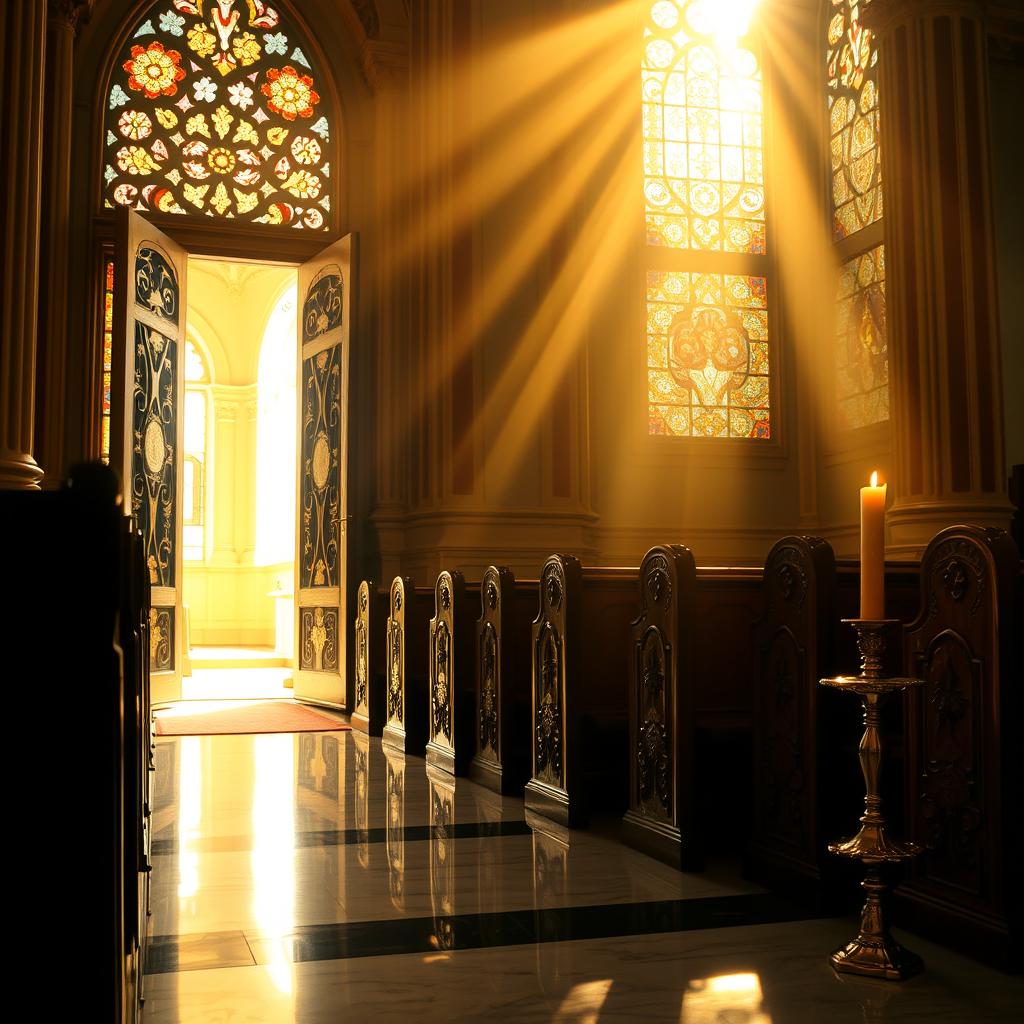
The liturgical celebrations are an opportunity for the faithful to come together and be inspired by the prophetic message. Through the readings and the homily, the community is called to action, to live out their faith with courage and conviction.
Jeremiah’s Persecution: Exploring Jeremiah 38:4-6,8-10
Jeremiah stood up against the corruption in Jerusalem’s leadership. This bravery led to severe persecution. It shows the challenges prophets face when they speak truth to power.
Historical Background of Jeremiah’s Ministry
Jeremiah prophesied during a chaotic time in Jerusalem. The city was filled with political intrigue and spiritual decay. Knowing this history helps us understand why Jeremiah was persecuted.
Political Climate in Jerusalem
The city was in a power struggle. Different groups fought for control. Jeremiah’s call for repentance and judgment was seen as a threat to the current power structure.
Jeremiah’s Unpopular Message
Jeremiah warned of doom if the people didn’t repent. His message was met with hostility. Those in power saw it as a challenge to their authority.
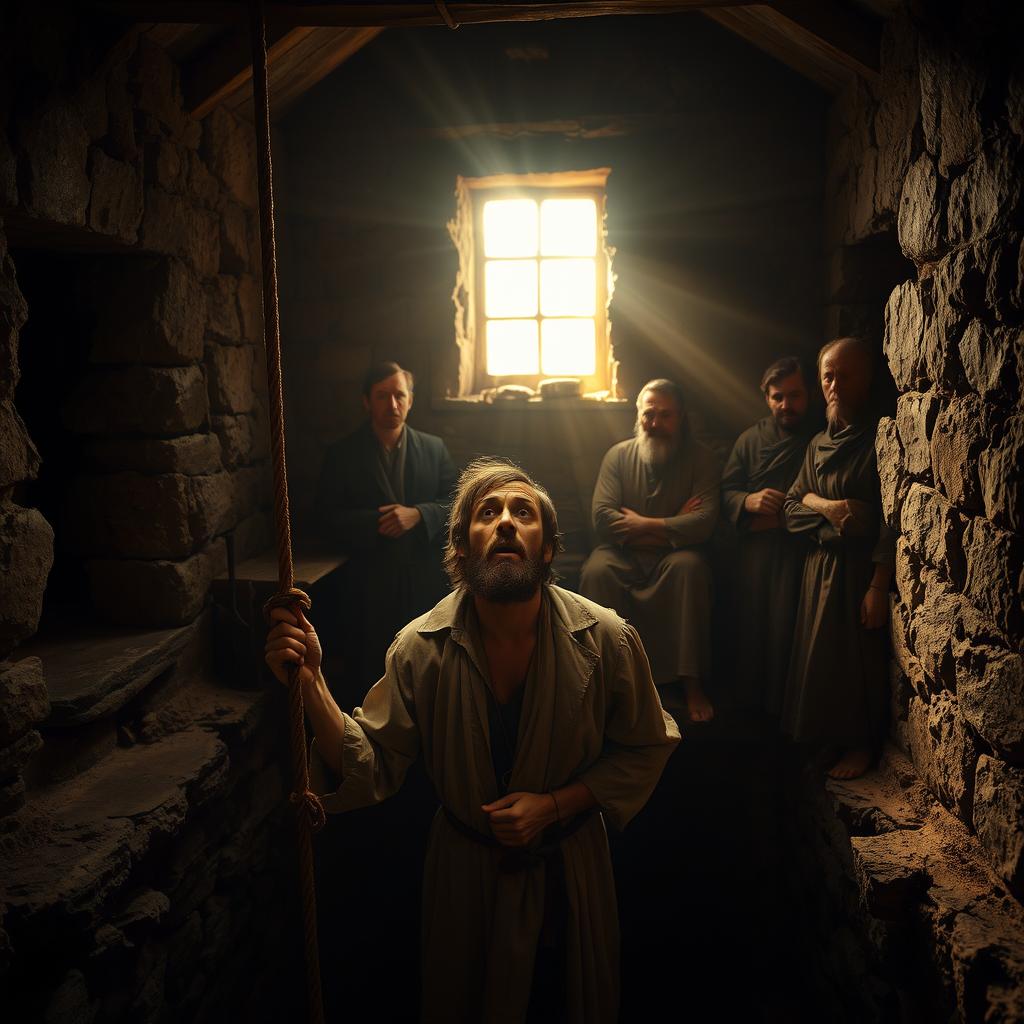
The Prophet’s Suffering in the Cistern
Jeremiah was thrown into a cistern, a muddy pit with no water. He sank into the mire. This shows the extreme opposition he faced.
Ebed-melech’s Compassionate Rescue
But Jeremiah’s story had a turn for the better. Ebed-melech, a court official, saved him from the cistern. This act of kindness shows God’s care for His prophets, even in hard times.
Reflecting on Jeremiah’s story teaches us about the cost of following God. Standing firm in our faith, even when faced with opposition, is crucial. Jeremiah’s experience reminds us of God’s presence in our struggles.
Theological Insights from Jeremiah’s Experience
Reflecting on Jeremiah’s ordeal, we find deep theological insights. These insights are key to understanding Christian discipleship. Jeremiah’s time in the cistern, as told in Jeremiah 38:4-6, 8-10, is a powerful story. It touches on suffering, faithfulness, and God’s deliverance.
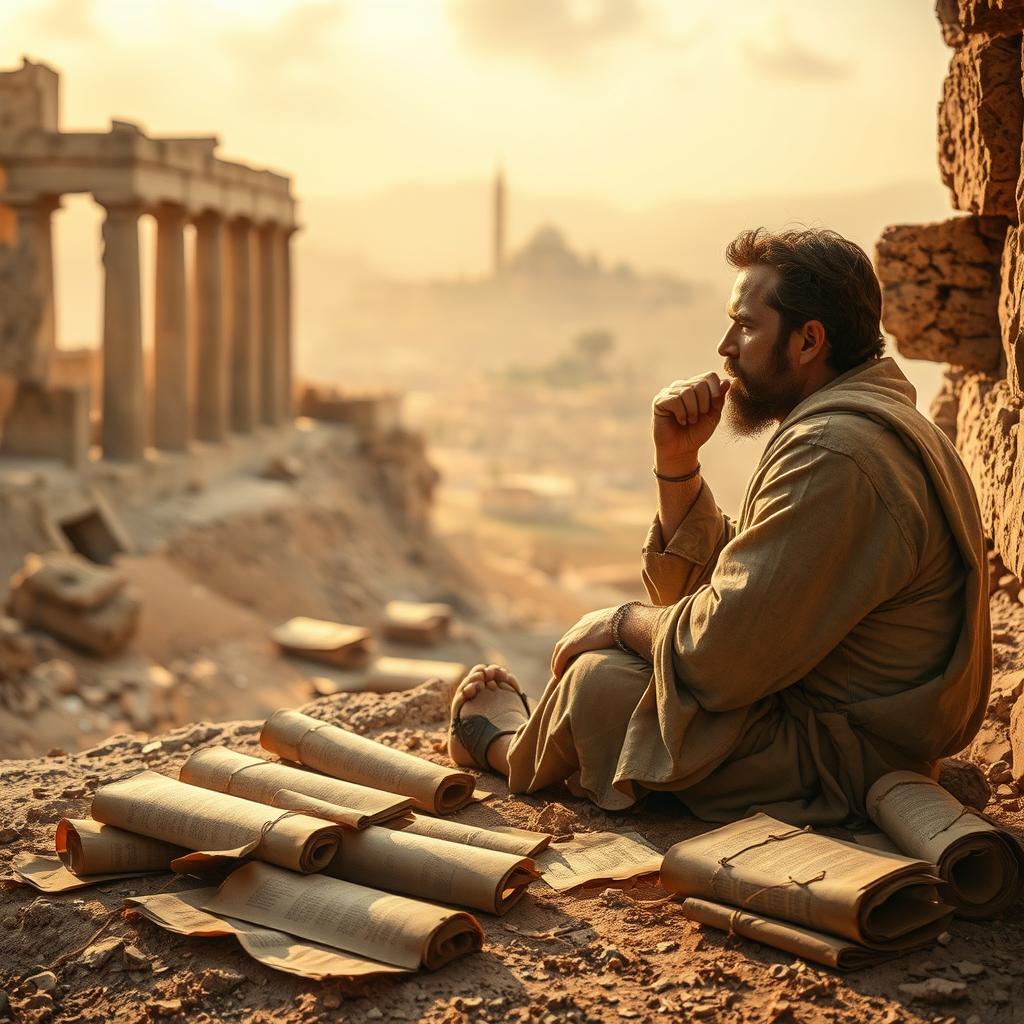
The Cost of Speaking Truth to Power
Jeremiah’s story shows the challenges prophets face when speaking truth. His confrontation with authorities led to severe persecution. This shows the cost of staying true to God’s message.
This theme is also seen in Christian worship. Believers are called to stand firm in their faith, even when faced with adversity.
Jeremiah as a Prefigurement of Christ
Jeremiah’s suffering and abandonment foreshadow Christ’s Passion. His time in the cistern mirrors Jesus’ descent into suffering and death. This connection enriches our understanding of Christ’s sacrifice and its importance for Christian discipleship.
Finding God’s Presence in Abandonment
Despite being forsaken and imprisoned, Jeremiah found comfort in his faith. His trust in God in the darkest times is a powerful example for Christians. It encourages believers to seek God’s presence in their hardest moments.
Personal Application for Times of Trial
In hard times, Christians are called to be like Jeremiah. Reflecting on his story gives strength to persevere. It reminds us that God is with us, even in suffering.
Community Support in Difficult Times
The story of Jeremiah also shows the importance of community support. Ebed-melech’s help for Jeremiah shows the value of standing with those who are persecuted. This theme is important in church service and community.
| Theological Theme | Jeremiah’s Experience | Christian Application |
|---|---|---|
| Speaking Truth to Power | Persecution for prophesying against Jerusalem | Standing firm in faith despite adversity |
| Prefigurement of Christ | Suffering and abandonment | Understanding Christ’s sacrifice |
| Finding God in Abandonment | Trust in God despite being forsaken | Seeking God’s presence in darkness |
“For I know the plans I have for you,” declares the Lord, “plans to prosper you and not to harm you, plans to give you hope and a future.” – Jeremiah 29:11
The Psalmist’s Response: Psalm 40:2,3,4,18
Reflecting on Jeremiah’s story, Psalm 40 offers a powerful message of faith. The Psalmist shares a similar experience of being rescued from a pit. This shows the power of trust in God.
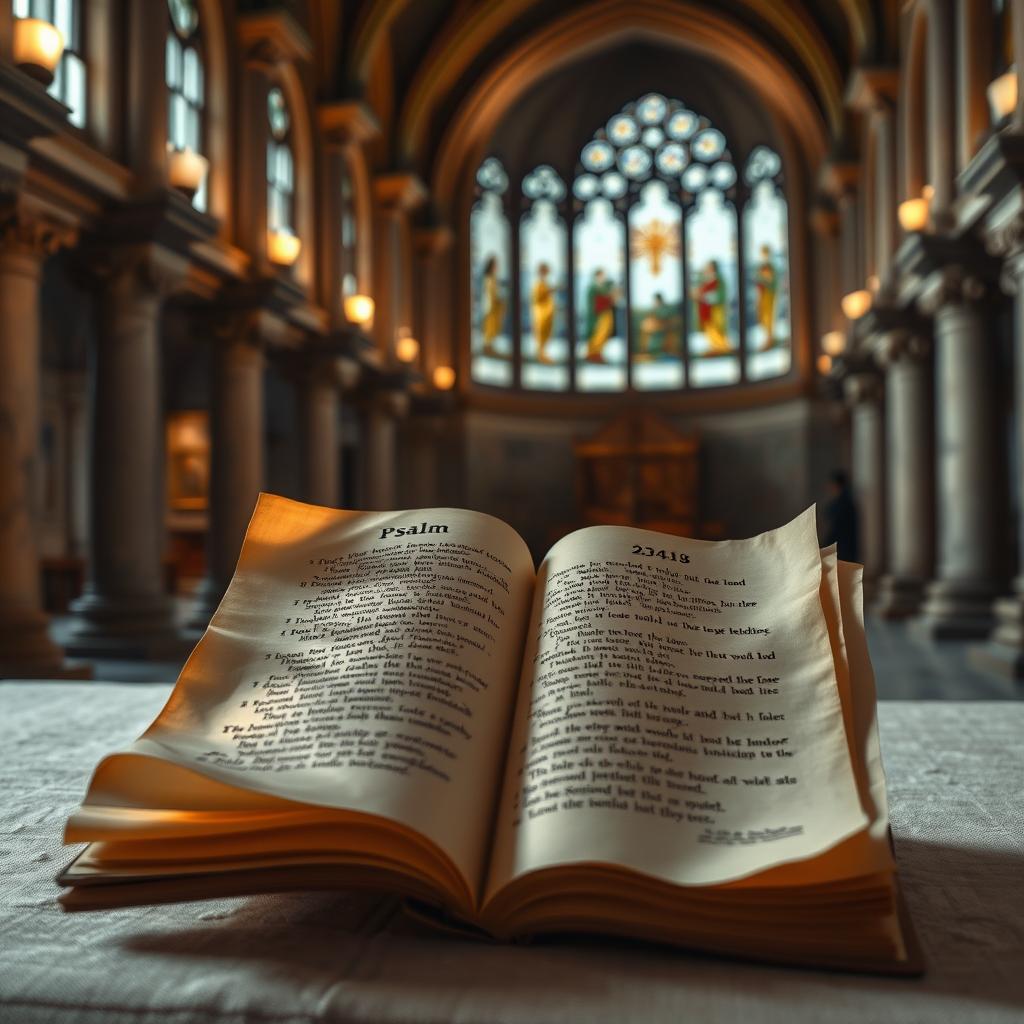
From the Pit to Praise
The Psalmist’s journey from despair to hope is told in Psalm 40:2-3. He was pulled out of a pit and stood on solid ground. This mirrors Jeremiah’s rescue, showing God’s power.
New Song as Spiritual Renewal
The Psalmist’s new song (Psalm 40:3) is a symbol of spiritual renewal. It shows the change that comes from trusting in God’s help. This song is not just personal but also a call to God’s faithfulness.
Trust in Divine Deliverance
The Psalmist’s trust in God’s help is a key theme in Psalm 40:4. This trust is based on real experiences of God’s saving actions. It teaches us to have faith, even in hard times.
Praying This Psalm in Personal Devotion
Praying Psalm 40 helps us connect our struggles and rescues with the Psalmist’s story. It deepens our trust in God’s help.
Musical Interpretations in American Worship
In American worship, Psalm 40 has been set to music in many ways. These musical interpretations add depth to our worship. They bring the Psalm’s messages of rescue and trust to our community.
Running the Race: Hebrews 12:1-4 in Detail
Hebrews 12:1-4 paints a vivid picture of the Christian life as a race. It calls for perseverance. Believers are urged to run this race of faith with endurance, surrounded by a cloud of witnesses.

The Cloud of Witnesses Surrounding Us
The idea of a “cloud of witnesses” is key in Hebrews 12:1-4. This cloud is made up of faithful people who have come before us. They show us what it means to persevere and have faith.
Saints as Our Spiritual Cheerleaders
These witnesses are not just watching; they are cheering us on. Their stories inspire us to keep going.
Drawing Strength from Their Example
Looking at the lives of those who have come before us gives us strength. It motivates us to stay on our own path of faith.
Laying Aside Burdens That Hinder
Hebrews 12:1 also tells us to shed every weight and sin that holds us back. This means identifying and getting rid of anything that slows us down.
To run the race well, we must be ready to let go of anything that hinders us. This keeps us focused on our goal.
Jesus as the Perfect Model of Endurance
The passage ends with Jesus as the ultimate example of endurance. He endured the cross, despite its shame, and now sits at God’s right hand.
By looking at Jesus, we find the courage to face our own challenges. He has shown us the way, and we can follow it.
In christian worship, we often think about Jesus and the saints’ examples of faith and endurance. The letter to the Hebrews reminds us that our faith is a journey together. It’s supported by a cloud of witnesses.
Spiritual Discipline According to Hebrews
The book of Hebrews shows us a powerful view of spiritual discipline. It’s a journey that tests and changes us. At its heart, it’s about sticking to our faith, even when things get tough.
Identifying Personal Weights and Sins
The first step is to find out what holds us back. Hebrews 12:1 tells us to “lay aside every weight and sin” that slows us down. This way, we can keep running our race of faith with courage.
Fixing Our Eyes on Christ
Hebrews teaches us to keep our eyes on Jesus. He is the leader and perfect example of our faith. Looking at Christ gives us the power to keep going, even when we face obstacles.
Resisting Temptation with Determination
Hebrews also talks about fighting off temptation. We’re called to go through hard times as a way to grow. It’s part of our spiritual training.
Practical Steps for Spiritual Training
- Engage in regular prayer and reflection
- Participate in communal worship and liturgical celebrations
- Practice self-discipline in daily life
Building Resilience in Faith
It’s key to build a strong faith that can handle tough times. By focusing on the examples of faith in the Bible and leaning on our Christian family, we can grow a more solid faith.

Jesus’ Challenging Words: Luke 12:49-53 Explained
In Luke 12:49-53, Jesus shares his mission in words that are both surprising and deeply meaningful. This part of the gospel is for the Twentieth Sunday in Ordinary Time, Cycle C. It makes readers think about Jesus’ teachings and what it means to follow him.
The Fire Jesus Came to Cast on Earth
Jesus says, “I have come to set the earth on fire, and how I wish it were already blazing.” This fire has many meanings.
Purification and Judgment
The fire Jesus talks about can mean purification and judgment. It shows the refining process of following Jesus fully. Fire is used in the Bible to mean purification.
The Fire of the Holy Spirit
Another view is that the fire is the Holy Spirit. This Spirit came to the apostles at Pentecost as tongues of fire. It started the Church’s mission to spread Jesus’ teachings.

Christ’s Baptism of Suffering
Jesus also talks about a baptism he must undergo, hinting at his suffering and death on the cross. This baptism is key to his mission, showing his ultimate love and redemption.
This baptism is not just about water but about being immersed in suffering. Jesus’ readiness to suffer shows his dedication to God’s plan.
Family Division as a Reality of Discipleship
Jesus’ words also mention that following him can cause family divisions. He says he has come to create divisions, with some family members supporting him and others opposing him.
| Aspect of Division | Implication |
|---|---|
| Family | Divided loyalties and conflicts |
| Community | Social and cultural tensions |
| Personal | Internal struggles and sacrifices |
This division is not because Jesus wants to cause trouble. It’s because his teachings are challenging and following him requires a big commitment.
In conclusion, Jesus’ words in Luke 12:49-53 show the deep meaning of his mission and the cost of being a disciple. Understanding these teachings can strengthen one’s faith and commitment to Jesus.
Contextualizing Christ’s Message of Division
It’s key to understand Jesus’ words on division to link them with his message of peace and love. In Christian worship, we explore many of Christ’s teachings, including the challenging one on division.
Reconciling with Jesus’ Teachings on Peace
Jesus’ teachings might seem confusing, mixing peace and division. But, looking at the context helps clear things up. The catholic liturgical calendar helps us see Jesus’ teachings in the bigger picture.

First-Century Family and Social Structures
In the first century, family was everything. It was about love, money, and safety. Jesus’ words on division often talked about conflicts between those who followed him and those who didn’t, even in families.
The Radical Nature of Gospel Commitment
Following the Gospel, as Jesus taught, was a big deal. It meant putting faith first, even before family and friends. This idea is a big part of the New Testament and Jesus’ teachings on division.
Modern Parallels in American Society
In today’s America, the struggle between faith and family or social life is real. Many Christians face hard choices, just like Jesus talked about.
Navigating Family Tensions over Faith
Dealing with these tensions needs wisdom, kindness, and a strong faith. By thinking about Jesus’ teachings and early Christian communities, we can learn to keep our faith strong while caring for our families and friends.
Reflecting on Christ’s message of division in Christian worship and the catholic liturgical calendar shows how his teachings are still important today.
Prophetic Witness Across the Readings
The Sunday mass readings call us to be faithful witnesses in our lives. Reflecting on the Twentieth Sunday in Ordinary Time, Cycle C, we see the theme of prophetic witness. It’s a call to stand up for our beliefs.
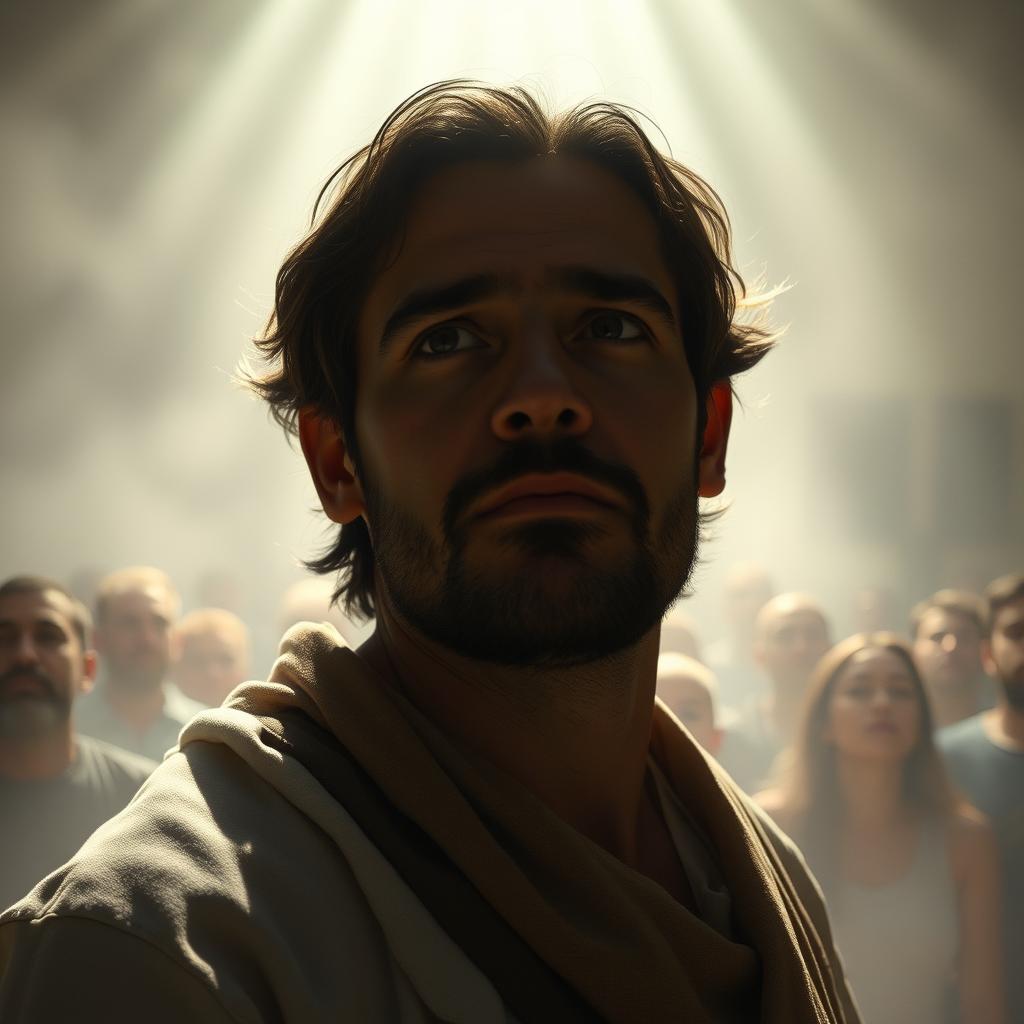
Parallels Between Jeremiah and Jesus
This Sunday’s readings show us Jeremiah and Jesus’ prophetic witness. Jeremiah was thrown into a cistern, just like Jesus would suffer later. Both faced hard times for speaking God’s truth.
Their stories remind us that prophetic witness is for all who follow Jesus. It’s not just for prophets from long ago.
The Consistent Call to Faithful Testimony
Being faithful is key for disciples. The readings tell us to stay strong in our beliefs, even when it’s hard. Hebrews says to keep running the race, looking at Jesus as our guide.
Divine Support Amid Opposition
When things get tough, the readings remind us of God’s support. God was with Jeremiah, and God is with us too. This gives us the courage to keep witnessing, even when it’s hard.
Examples from American Saints and Martyrs
American history is full of saints and martyrs who showed prophetic witness. People like Dorothy Day and martyrs from the Spanish Civil War were brave and true to their faith.
Courage in Contemporary Witness
Today, we must keep this legacy alive. We face many challenges, but we must stay strong in our faith. We need to speak truth and be a beacon of hope. This takes courage, but we know God is with us.
Reflecting on the Sunday mass readings, let’s be inspired to live our faith boldly. Let’s show the prophetic witness that is at the heart of our Christian calling.
Historical Interpretations Through Church Tradition
Looking into the Twentieth Sunday in Ordinary Time, Cycle C, shows the Church’s deep tradition. This tradition helps us grasp the prophetic witness theme in the readings.
Early Church Fathers on These Texts
The Early Church Fathers gave us deep insights into the scriptures. They saw Jeremiah’s suffering as a sign of Christ’s Passion.
Medieval and Reformation Perspectives
In the Medieval times, thinkers like Thomas Aquinas highlighted the need for faith and perseverance. The Reformation brought a focus on Scripture’s authority, changing how we see the readings.
Contemporary Catholic Theological Approaches
Today, Catholic scholars dive into the readings’ meanings, tackling modern issues. American scholars have made big contributions to this study.
American Catholic Biblical Scholarship
American scholars bring a fresh view to Scripture study. They use both historical-critical methods and modern theology.
Liturgical Evolution in the United States
The Church’s tradition has shaped the church service in the U.S. Changes reflect both local needs and global teachings.
| Period | Key Interpretive Themes | Influential Figures |
|---|---|---|
| Early Church | Prophetic witness, Christological prefigurations | St. Augustine, Origen |
| Medieval | Faith, perseverance, sacramental theology | Thomas Aquinas |
| Reformation | Scripture’s authority, faith vs. works | Luther, Calvin |
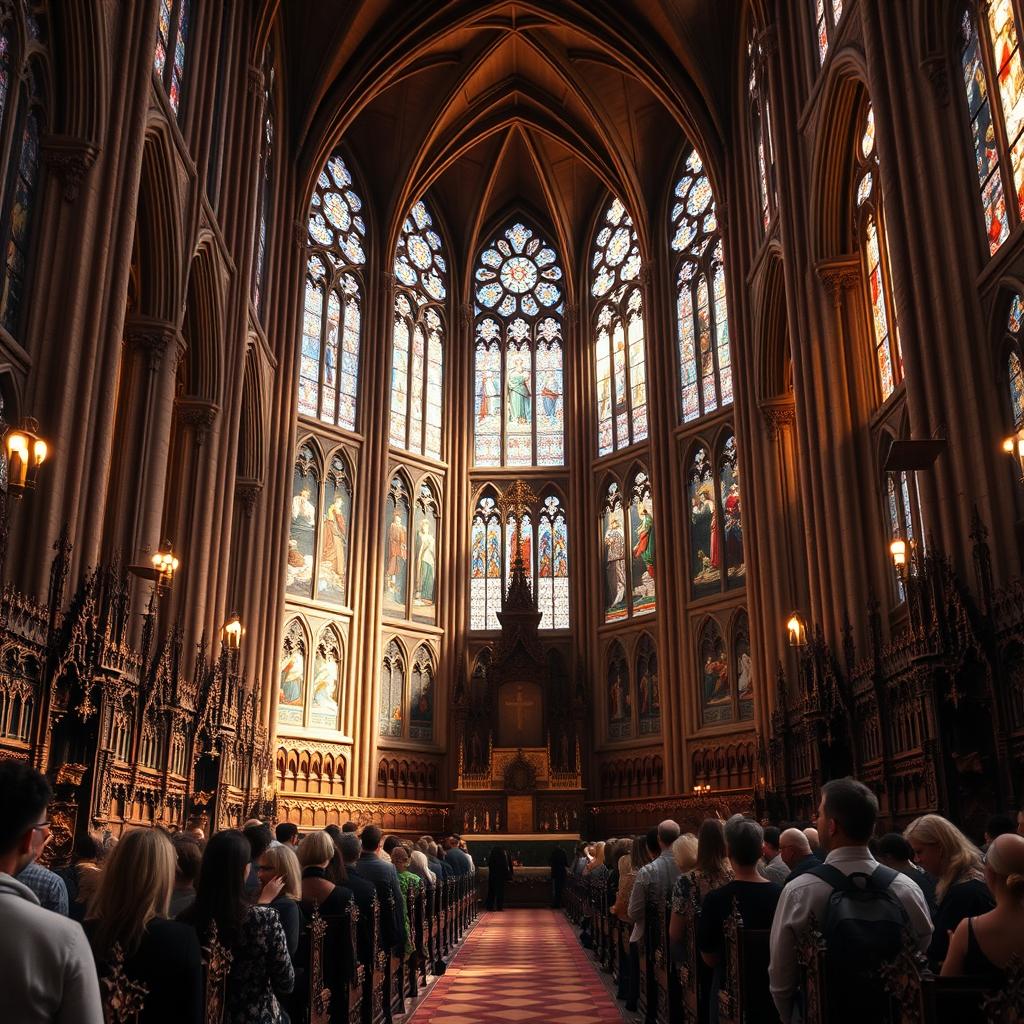
The Catholic tradition gives us a broad view of the readings. It spans centuries, helping us deepen our faith and see the Church’s teachings as continuous.
Living the Message in Today’s World
Living out the Gospel message today takes courage and conviction. As Christians, we face the challenges of modern society while staying true to our faith.
Standing Firm in a Polarized Society
In a world filled with divisions, Christians must stand firm in their beliefs. They should do this while being respectful to those with different views.
Respectful Dialogue Across Differences
Engaging in respectful dialogue means listening well and speaking truthfully, even when it’s hard. It’s about being open to others while staying true to our convictions.
Maintaining Integrity Under Pressure
Maintaining integrity when faced with opposition or pressure is key. It means sticking to our principles and values, even if they’re not popular.
Finding Courage to Speak Truth
Speaking truth in a world full of misinformation takes courage and clarity. It’s about being a voice for the voiceless and standing up for what’s right.
- Being informed about current issues
- Engaging in prayerful reflection
- Seeking guidance from scripture and church teachings
Building Faith Community Despite Divisions
Building a faith community that goes beyond divisions requires fostering a spirit of unity and cooperation. It’s about seeing our shared humanity and faith.
In the context of christian worship and liturgical celebration, we find the strength and inspiration to live our faith in a divided world.
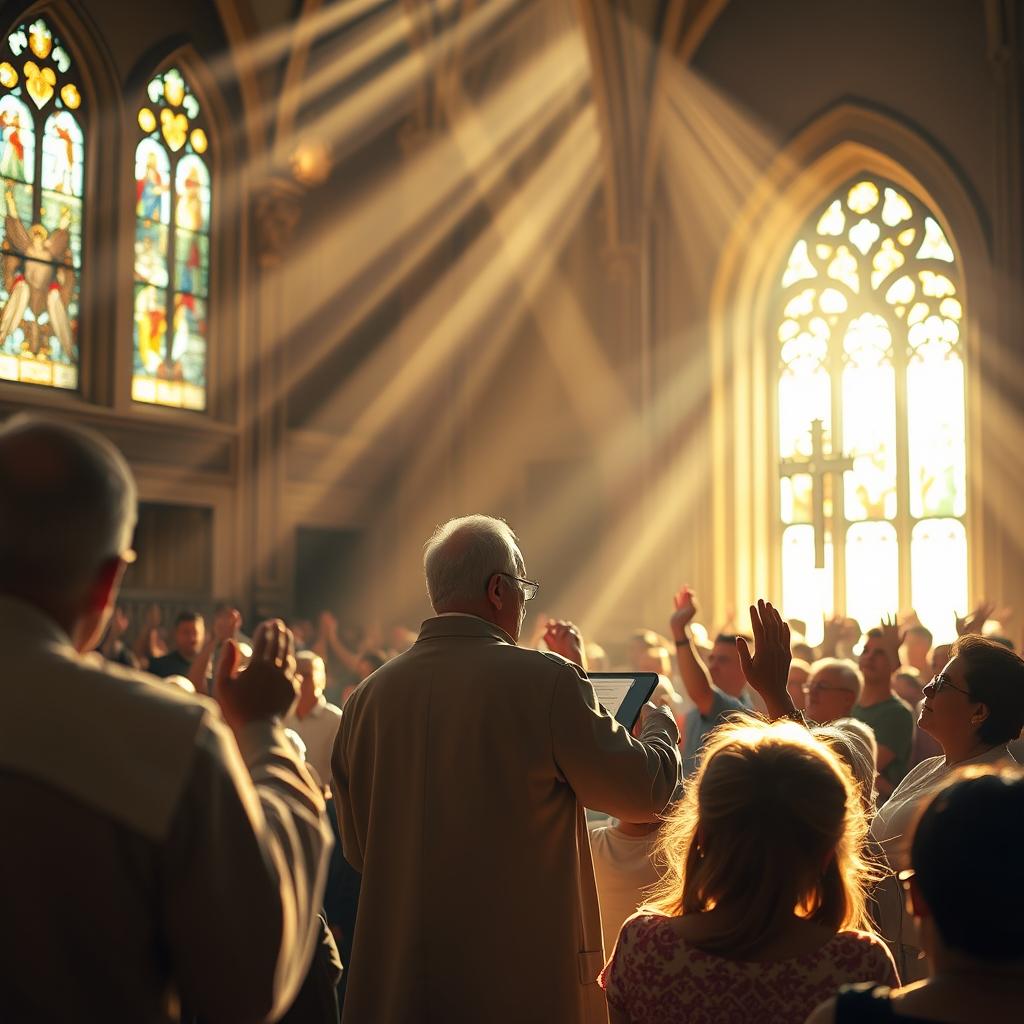
By coming together in worship and supporting each other, we can be a beacon of hope and unity in our communities.
Liturgical Celebrations in American Parishes
The Twentieth Sunday in Ordinary Time, Cycle C, is celebrated with music, prayer, and community activities. It’s a day for Catholics to unite and deepen their faith. Various liturgical elements are used to achieve this.
Music Selections for This Sunday
Music is key in the celebration. For the Twentieth Sunday, parishes pick hymns and songs that match the themes of prophetic witness and discipleship. Some favorites include:
- City of God, a hymn that highlights the unity of believers.
- Here I Am, Lord, a song that speaks to the call to serve and witness.
- Psalm 40, which ties in with the Sunday’s Psalm reading.
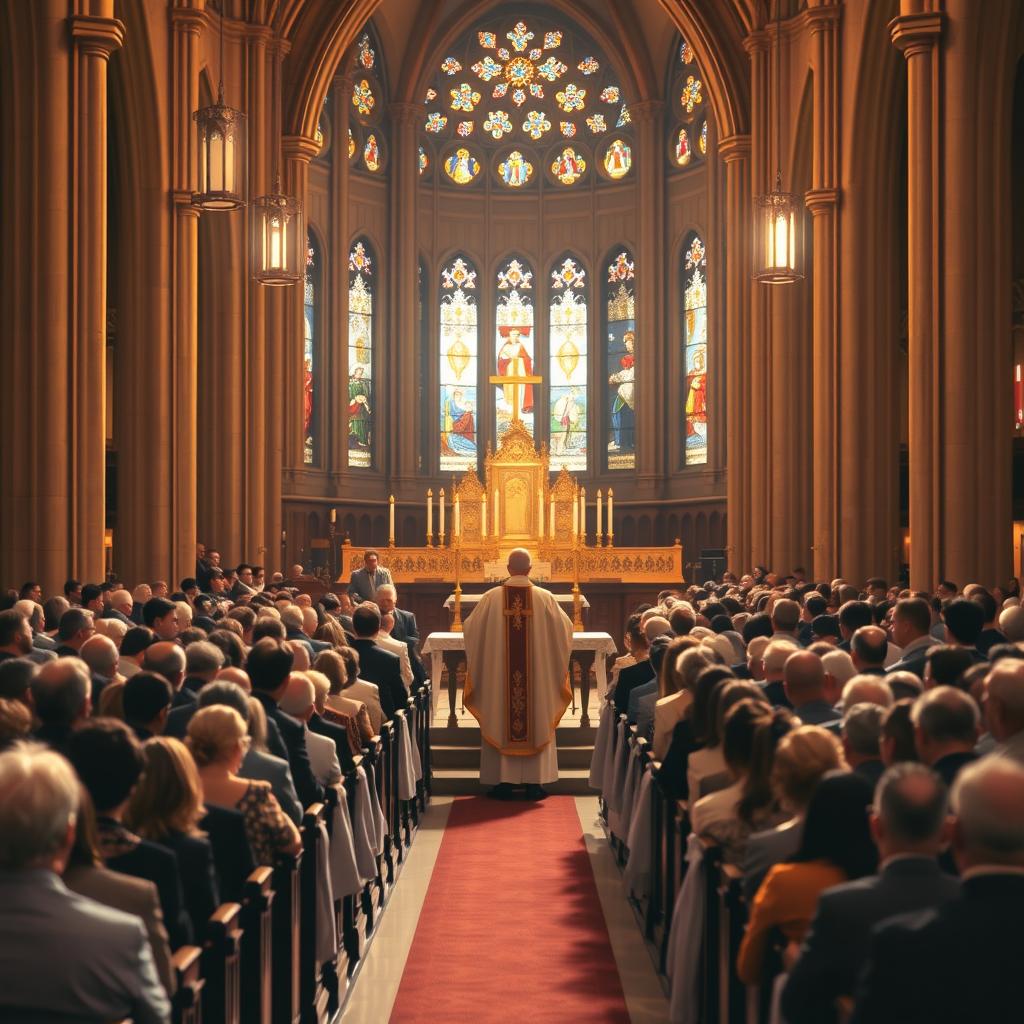
Complementary Prayers and Devotions
Parishes also add special prayers and devotions on this Sunday. These might include:
- Prayers for staying strong in faith, inspired by Jeremiah and Jesus.
- Devotions to saints like St. Joseph Pignatelli, who stood strong in faith.
- Intercessory prayers for those facing hard times or persecution.
Parish Activities and Observances
Activities on this Sunday might include community events, educational programs, and outreach. Parishes may also celebrate special traditions or customs that are important to their community.
Regional Traditions Across the United States
Across the United States, different regions have their own traditions and cultural practices. For example:
- In Hispanic communities, the day is celebrated with traditional music and food, honoring their cultural heritage.
- In other areas, parishes may host events to support local charities or community groups.
Incorporating Cultural Diversity
This Sunday’s celebration is also a chance to showcase the diversity within the Catholic community in the United States. Parishes are encouraged to add cultural elements to their worship. This makes the liturgy more inclusive and lively.
Carrying the Prophetic Flame Forward
Reflecting on the Twentieth Sunday in Ordinary Time, Cycle C, reminds us of the prophetic witness’s importance. Jeremiah and Jesus’ stories urge us to stay strong in our faith. This is true even when faced with challenges and division.
The call to prophetic witness is for everyone, not just prophets or Jesus. We are all called to carry the prophetic flame. This means speaking truth and living our faith boldly.
In a world filled with conflict, the Gospel’s message is a powerful tool for change. Building strong faith communities requires a spirit of prophetic witness. We must hold our beliefs firmly but also listen to the Holy Spirit.
Let’s find inspiration in Jeremiah and Jesus’ examples. Let’s embrace our role as prophetic witnesses today.
Escape the Cycle of Reincarnation: Your Guide
